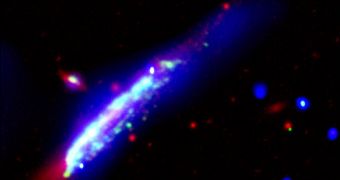Two researchers from the Cornell University announce that they have developed a new intelligent machine, that is capable of determining the fundamental laws of nature – such as gravity – based solely on the raw data it processes.
The instrument was developed by Hod Lipson, the director of the Computational Synthesis Lab at the university, and his graduate student Michael Schmidt. Gravitation is one of the basic laws of physics that the machine can process, the researchers say.
What's remarkable about this computer is that the Cornell team managed to “train” it into teasing out regular patterns in the natural world in just a few years. At this point, the machine is capable of determining whether natural occurrences respect one of the patterns it already found or not.
When the study first began, this computer had no scientific databases installed, the team explains. Everything it can do it learned to do all by itself. This is a remarkable feat by itself, the group adds.
Thus far, the new algorithms that operate the computer have only been tested on laws of physics that can be extracted from rather basic mechanical systems. However, Cornell experts seem to think that the approach can be translated to studying more complex systems as well.
The algorithms could therefore find applications in areas ranging from systems biology to astronomy and astrophysics. Furthermore, they could also assist the processing of information obtained by electronic data collection systems in current investigations, Daily Galaxy reports.
When the work began, Schmidt used a video camera imaging a swinging pendulum to feed images into the computer. The algorithms were then left to do their work, which was figuring out a set of equations to explain the motions of the pendulum.
“Initially, the task looked hopeless. When a double pendulum moves chaotically, its arms swing in a way that is almost impossible to predict, with seemingly no pattern whatsoever,” he says.
“For a human, finding an equation for this would be almost impossible. And yet the computer found something,” adds Schmidt, a PhD student in computer science at Cornell. “It's probably the most exciting thing that has happened to me in science,” he tells New Scientist in an interview.
What's interesting about the new computer program is that it does not produce equations itself, but rather identifies invariants. These are a very specific type of mathematical expressions, that are always true regardless of how specific conditions in the system they describe change.
Human operators can then analyze these invariants, and then derive equations from the data. “Even though it looks like it's changing erratically, there is always something deeper there that is always constant,” Lipson explains.
“That's the hint to the underlying physics. You want something that doesn't change, but the relationship between the variables in it changes in a way that's similar to what we see in the real system,” he concludes.

 14 DAY TRIAL //
14 DAY TRIAL //